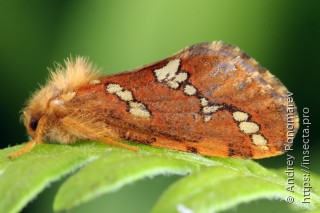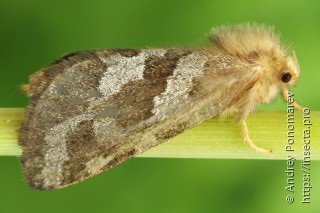Phymatopus hecta
Taxonomy
class Insecta
Species name(s)
Phymatopus hecta (Linnaeus, 1758) = Hepialus hecta = Phalaena hecta Linnaeus, 1758 = jodutta (Denis & Schiffermüller, 1775) = clavipes (Retzius, 1783) = Noctua nemorosa Esper, 1786 = unicolor (Petersen, 1902) = hectica (Bang-Haas, 1927) = zetterstedti (Burrau, 1950) = radiata (Lempke, 1959) = continua (van Wisselingh, 1961) = Phymatopus hectus. [9, 10, 85]
Gold Swift.
urn:lsid:insecta.pro:taxonomy:6260
Expansion
This species marks on the maps: 3.
Zoogeographical regions
Palaearctic.
Russia regions
#1. Kaliningradsky; #2. Kolsky; #3. Karelsky; #4. Evropeisky Severo-Zapadny; #6. Evropeisky Severo-Vostochny; #7. Evropeisky yuzhno-tayozhny; #8. Evropeisky Tsentralny; #9. Evropeisky Tsentralno-Chernozyomny; #10. Sredne-Volzhsky; #13. Zapadno-Kavkazsky; #15. Severo-Uralsky; #16. Sredne-Uralsky; #17. Yuzhno-Uralsky; #20. Yuzhno-Zapadnosibirsky; #22. Krasnoyarsky; #24. Gorno-Altaisky; #27. Pribaikalsky; #38. Sakhalin; #39. Yuzhno-Kurilsky; #40. Primorsky*.
* An asterisk denotes a region for which the species is listed as an migrant or information that requires additional checking.
Forewing length
11—18 mm.
Primary colors
Orange, Brown/Gray/Black, White.
Flight time
| January | February | March | April | May | June | July | August | September | October | November | December |
Larva lifespan
| January | February | March | April | May | June | July | August | September | October | November | December |
Over-wintering stage
Larva.
Detailed information with references
Taxonomy, synonyms and combinations
Distribution
Imago Habitus and Differences from alike species
General info about Imago
Imago lifespan
General info about Larva
Larva food plants / other food objects
Larva lifespan
Subspecies of Phymatopus hecta
- Hepialus hecta hectica Bang-Haas, 1927. [187]
- P. h. radiata Lucas, 1959. [187]
- P. h. zetterstedti Burrau, 1950. [187]
Authors
Initial species uploading to the site: Peter Khramov.
Text data: Peter Khramov, Shamil Murtazin.
The species characteristics formalization: Peter Khramov, Sergei Kotov.
References
- [1] O. Karsholt, J. Razowski (eds.), 1996. The Lepidoptera of Europe: a distributional checklist
- [3] Каталог чешуекрылых (Lepidoptera) России. Под ред. С. Ю. Синёва. СПб.; М.: Товарищество научных изданий КМК, 2008
- [5] Райххолф-Рим Х. Бабочки. М.: Астрель, 2002
- [9] Tree of Life (funet.fi), 2012
- [10] de Jong, Y.S.D.M. (ed.) (2011) Fauna Europaea version 2.4 (faunaeur.org)
- [85] Lepidoptera species catalogue, Lepidoptera.ru, 2015
- [86] Горбунов П. Ю., Ольшванг В. Н. Бабочки Южного Урала. Справочник-определитель. Екатеринбург: Сократ, 2008
- [187] Species 2000, http://www.sp2000.org
- [PC695] Shamil Murtazin
Comments
Note: you should have a Insecta.pro account to upload new topics and comments. Please, create an account or log in to add comments
Phymatopus hecta photos




























All the photos of the species in large size
Please, create an account or log in to upload your photo


